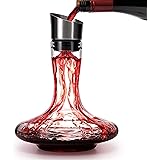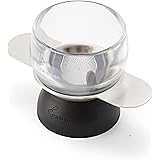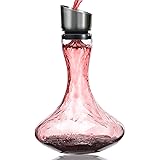A Comprehensive Guide to Popular Wine Varietals: Uncorking Your Next Favorite Bottle
Navigating the vast world of wine can often feel like a complex journey through an intricate maze. With countless bottles vying for your attention, understanding the nuances of different wine varietals sometimes seems daunting. You might find yourself wondering which bottle to choose for a special occasion or how to perfectly pair it with your meal. This comprehensive guide, building upon the excellent overview provided in the video above, aims to demystify some of the most cherished wine types. By exploring their unique characteristics, fascinating histories, and ideal food pairings, you will be equipped to select your next bottle with confidence and enjoyment.
Decoding Red Wine Varietals: Bold, Smooth, and Everything In Between
Cabernet Sauvignon: A Timeless Classic
The journey into red wine often commences with Cabernet Sauvignon, a grape known for its robust character. Originating in 17th-century France, this particular varietal was an accidental yet fortunate crossing of Cabernet Franc and Sauvignon Blanc grapes. Its strong, complex flavor profile typically features black currant notes, sometimes complemented by a touch of mint or cedar. The “King of Grapes” has maintained its regal status throughout history, remaining a top choice globally. When a glass of Cabernet Sauvignon is poured, it is more than just a drink; it represents a delicious piece of history, cherished by many generations.
This full-bodied red wine is often accompanied by hearty dishes like grilled steak, where its robust tannins can effectively cut through the richness of the meat. The wine’s structural integrity makes it a perfect complement to such savory fare, creating a balanced culinary experience. An aged cheddar cheese also makes a delightful companion, allowing the wine’s depth and fruit characteristics to be fully appreciated.
Merlot: The Softer Sibling
Often considered a counterpoint to Cabernet Sauvignon, Merlot offers a different but equally compelling experience. While both grapes originated in Bordeaux, France, Merlot emerged in the late 18th century, nearly a century after its famous cousin. Initially, its primary role was to soften the pronounced tannins found in Cabernet Sauvignon blends, acting like a smooth velvet cloak for a structured garment. Over time, Merlot successfully transitioned into a popular stand-alone wine, celebrated for its softer, fruitier profile. Its preferred growing conditions involve clay-rich soils, predominantly found in Bordeaux’s Right Bank.
In contrast, Cabernet Sauvignon thrives in gravelly soils of the Left Bank, showcasing the significant impact of terroir, the unique environment where a grape is grown. Merlot wines are characterized by lush plum and cherry flavors, often with hints of chocolate or herbs, presenting a velvety texture that is less intense than Cabernet Sauvignon. By the late 20th century, particularly in the United States, Merlot was widely embraced as an easy-drinking red wine, appreciated for its approachable charm. This accessibility helped introduce many to the pleasure of red wines.
Pinot Noir: Elegance in a Bottle
For those who appreciate delicacy and complexity, Pinot Noir often stands out among red wine varietals. This grape is highly regarded for its distinctive taste, presenting a beautiful balance of fruitiness and acidity. However, cultivating and crafting excellent Pinot Noir is a considerable challenge for growers and winemakers alike. The grape demands very specific growing conditions, preferring cool climates that allow its grapes to ripen slowly and develop rich, nuanced flavors. The revered Burgundy region in France is considered its spiritual home, where centuries of cultivation have perfected its expression.
Today, notable Pinot Noir also comes from cool-climate regions in California, such as the Russian River Valley, which share key climatic traits. This delicate red wine often features subtle earthy notes, reminiscent of forest floor or mushrooms, alongside bright red fruit flavors like cherry and raspberry. To truly appreciate its complexities, careful food pairing is essential. Pinot Noir beautifully complements dishes with earthy components, such as truffles or mushrooms. Game meats like duck or venison also find a perfect partner in this elegant wine, as do various salmon preparations, with its bright acidity cutting through the fish’s richness.
Shiraz/Syrah: The Spice of Life
Known across the globe for its bold and spicy character, Shiraz, or Syrah as it is called in its native Rhône Valley, France, has captivated many wine enthusiasts. While it originated in France, this robust grape has found a celebrated second home in Australia, becoming a signature variety in regions like Barossa Valley and McLaren Vale. These warm, dry climates, with their long growing seasons, enable the grapes to develop incredibly rich and concentrated flavors. The resulting wines are often described as powerful and aromatic, truly reflecting their sunny origins.
When contemplating food pairings, Shiraz proves itself to be a versatile wine capable of standing up to equally bold and savory dishes. Its signature spicy notes, often including black pepper, and robust tannins make it an excellent companion for grilled or roasted meats such, as lamb, beef, or venison. The wine’s dark fruit flavors, reminiscent of blackberry and plum, are also particularly harmonious with rich, tomato-based sauces, exemplified by classic spaghetti Bolognese or a slow-cooked ragout. A comparison is often drawn to Malbec due to their shared boldness, but Shiraz generally offers more pronounced spice and firmer tannins.
Malbec: A New World Revelation
Another bold and flavorful red wine that shares some similarities with Shiraz yet possesses its own distinct personality is Malbec. Originally from the Cahors region of France, Malbec has truly flourished in the high-altitude vineyards of Argentina, particularly in the Mendoza region. The grape thrives under the intense sun of warm days and the cool nights characteristic of the Andes foothills. These dramatic climatic shifts enable it to develop a unique flavor profile that differentiates it from its French ancestors, resulting in a distinctly New World expression.
Both Malbec and Shiraz are full-bodied wines with dark fruit flavors. However, Malbec generally presents a softer, more velvety texture with less harsh tannins, offering a smoother experience on the palate. Its taste is dominated by lush, ripe fruit flavors like blackberry, plum, and black cherry. These are often accompanied by subtle hints of cocoa, vanilla, and even a touch of tobacco, thanks to the wine’s frequent aging in oak barrels. Malbec’s remarkable journey from the Old World to its new home in Argentina, adapting beautifully to high altitudes, truly sets it apart among red wine varieties. It offers a luxurious mouthfeel that is remarkably appealing to many.
Exploring White & Rosé Wine Varietals: From Crisp to Buttery
Rosé: The Quintessence of Versatility
The delightful pink hue of Rosé wine signifies its light and refreshing character. Produced in numerous regions worldwide, with Provence, France, being a prominent producer, Rosé gains its color through a specific winemaking technique. Red grape skins are allowed to briefly soak in the grape juice, transferring pigments before being removed. This controlled skin contact produces a range of captivating shades, from a delicate blush to a vibrant fuchsia, without extracting the full tannin profile of red wines. The taste of Rosé is wonderfully varied, often combining refreshing red fruit flavors, such as strawberry and cherry, with a crisp acidity.
Hints of citrus, rose petals, and melon can also be detected, contributing to its light and appealing profile. Its inherent versatility and refreshing qualities make it an ideal partner for an incredibly wide array of dishes. Rosé complements fresh salads, various seafood preparations, and even white meats. Moreover, its refreshing acidity acts as a perfect counterpoint to spicy foods, making it a truly adaptable choice for many culinary adventures. It stands as a perfect bridge between red and white wines, offering the best of both worlds.
Chardonnay: A Canvas of Flavor
Transitioning to the world of exquisite white varietals, Chardonnay emerges as a celebrated choice that has captivated countless palates. This prestigious white wine originated in Burgundy, France, boasting a long and rich history dating back to the Middle Ages. Its name is derived from the Chardonnay Village in the Mâconnais region, where its legacy began. Over centuries, this adaptable grape has journeyed across the globe, finding new homes and expressing itself uniquely in regions like California and Australia.
Chardonnay is particularly renowned for its remarkably diverse flavor profile, which functions almost like a canvas for winemakers. In cooler climates, Chardonnay wines often exhibit crisp flavors of green apple, bright citrus, and a subtle minerality, reflecting the leaner growing conditions. Conversely, in warmer regions, tropical fruit notes such as pineapple and mango become more pronounced, indicating riper fruit. Furthermore, many Chardonnays are aged in oak barrels, a process that imparts complex flavors of vanilla, butter, and toasted bread, significantly increasing the wine’s depth and overall complexity. This ability to range from lean and crisp to rich and buttery ensures a Chardonnay exists for every preference.
Sauvignon Blanc: Zesty and Refreshing
For those who prefer a vibrant and aromatic white wine, Sauvignon Blanc is an exceptionally popular choice, cherished by wine enthusiasts globally. This grape varietal flourishes particularly well in cool climates, achieving its quintessential crisp and refreshing taste in regions like the Loire Valley in France and New Zealand’s Marlborough region. A hallmark of Sauvignon Blanc is its distinctively high acidity, which contributes to its lively, zesty mouthfeel, often described as bright and invigorating. The aromatic profile of Sauvignon Blanc varies significantly based on its growing region and specific winemaking techniques.
Wines from cooler areas frequently present herbaceous notes, often described as grassy, green pepper, or nettle, due to compounds known as pyrazines. As the grapes ripen, especially in warmer regions like California or South Africa, these notes can shift towards more tropical fruit aromas, such as passionfruit. The natural acidity and aromatic complexity of Sauvignon Blanc make it a superb pairing for various dishes. It brightens light summer meals, harmonizes with herbs like basil or mint, and especially enhances seafood, with oysters being a particularly classic match. Its refreshing nature provides an ideal counterpoint to rich or oily foods, cutting through fats beautifully.
Riesling: A Spectrum of Sweetness
With a heritage steeped in history and a character celebrated for its aromatic elegance, Riesling is a truly noble grape variety. Its origins are traced back to the picturesque Rhine region of Germany, where it has been cultivated for centuries on the steep, terraced slopes of the Rhine Valley. This unique environment has allowed Riesling to develop a distinct character that perfectly reflects its specialized terroir, emphasizing the interaction of climate, soil, and tradition. The cool climate and mineral-rich soils of the Rhine contribute to grapes that achieve a remarkable balance of natural sweetness and bright acidity.
This allows winemakers to produce a broad spectrum of wines, ranging from bone-dry to lusciously sweet, often with floral and stone fruit notes. Riesling is adored for its exceptional versatility with food, making it a favorite among sommeliers and home cooks alike. The wine’s off-dry to sweet styles are particularly renowned as a perfect match for spicy Asian cuisines, such as the vibrant flavors found in Thai or Indian dishes. Its inherent sweetness provides a soothing contrast to the heat, enhancing the overall dining experience by balancing the spice.
Vinho Verde: The Youthful Spritz
From the verdant landscapes of northern Portugal comes Vinho Verde, a refreshing and often subtly effervescent white wine. The name, which translates to “green wine,” does not imply a green color but rather refers to its youthful, vibrant character, indicating that it is typically released young. This unique wine is crafted in the lush, green hills of the Minho region, where a cool, damp climate and fertile soils provide ideal conditions for cultivating the indigenous grape varieties used in its production. The traditional blend often includes Loureiro, Arinto, and Trajadura grapes, among others.
Vinho Verde is typically light-bodied, characterized by bright acidity and a slight spritz that dances on the palate, creating a refreshing sensation. These qualities make it an exceptional pairing for seafood, especially delicate shellfish and grilled fish, as its zestiness cleanses the palate. It also harmonizes beautifully with crisp salads and a variety of light appetizers. For anyone seeking a distinctive and invigorating white wine to savor on a warm day, a bottle of Vinho Verde promises to deliver the youthful charm of this Portuguese specialty, offering a delightful and unique experience that transports you straight to its coastal origins.
Unique & Celebratory Wine Types: Zinfandel and Champagne
Zinfandel: The Bold and Fruity American Icon (with Croatian Roots)
Captivating the hearts of many wine enthusiasts, Zinfandel is a grape variety celebrated for its bold and spicy character. It is primarily known for producing robust and intensely fruity wines, frequently showcasing notes of blackberry, raspberry, and a distinctive hint of black pepper. While Zinfandel has a rich and established history in California, where it has been cultivated since the mid-19th century, its true genetic origins can be traced back to Croatia, where it is known as Crljenak Kaštelanski. This discovery highlights the fascinating global journey of grape varieties and their evolution.
When considering food pairings, Zinfandel’s bold and spicy profile makes it an ideal companion for hearty and flavorful dishes. The wine’s robust tannins and often high alcohol content pair beautifully with grilled meats, such as beef or lamb, where it can stand up to the richness. It also complements spicy cuisines, including Mexican or Indian dishes, balancing their heat with its fruit and spice. Furthermore, Zinfandel is perfectly suited for rich, tomato-based dishes, like pasta with meat sauce or a slice of flavorful pizza, as its fruit-forward nature harmonizes with the acidity of tomatoes.
Champagne: The Pinnacle of Celebration
Embodying luxury and celebration, Champagne is the world’s most famous effervescent wine. Its distinctive character is attributed to a unique and labor-intensive fermentation process known as the “Méthode Champenoise.” This traditional method involves a crucial second fermentation occurring directly within the individual bottle, which is responsible for creating Champagne’s signature bubbles and developing its complex flavors. During this intricate process, yeast and sugar interact within the bottle, crafting a symphony of aromas and tastes that can range from delicate hints of citrus and brioche to richer, toasty undertones. The specific grape varieties allowed in Champagne production are Chardonnay, Pinot Noir, and Pinot Meunier, each contributing unique elements to the blend.
The captivating history of Champagne is as enchanting as the wine itself, with its origins dating back to the 17th century in the region of France bearing the same name. It is here that the legendary monk, Dom Pérignon, is famously credited with discovering many of the secrets behind sparkling wine production. His supposed exclamation, “Come quickly, I’m tasting the stars!” perfectly encapsulates the magical experience of this extraordinary beverage. When a bottle of Champagne is opened, it often signifies joy, accomplishment, and unforgettable moments, cementing its status as the ultimate celebratory drink. Whether it’s a grand toast or a quiet evening, a glass of this esteemed sparkling wine type offers an unparalleled experience.







